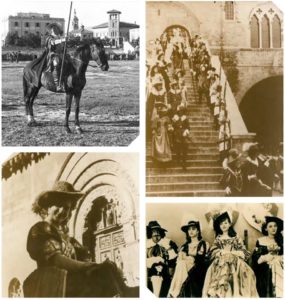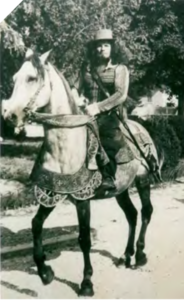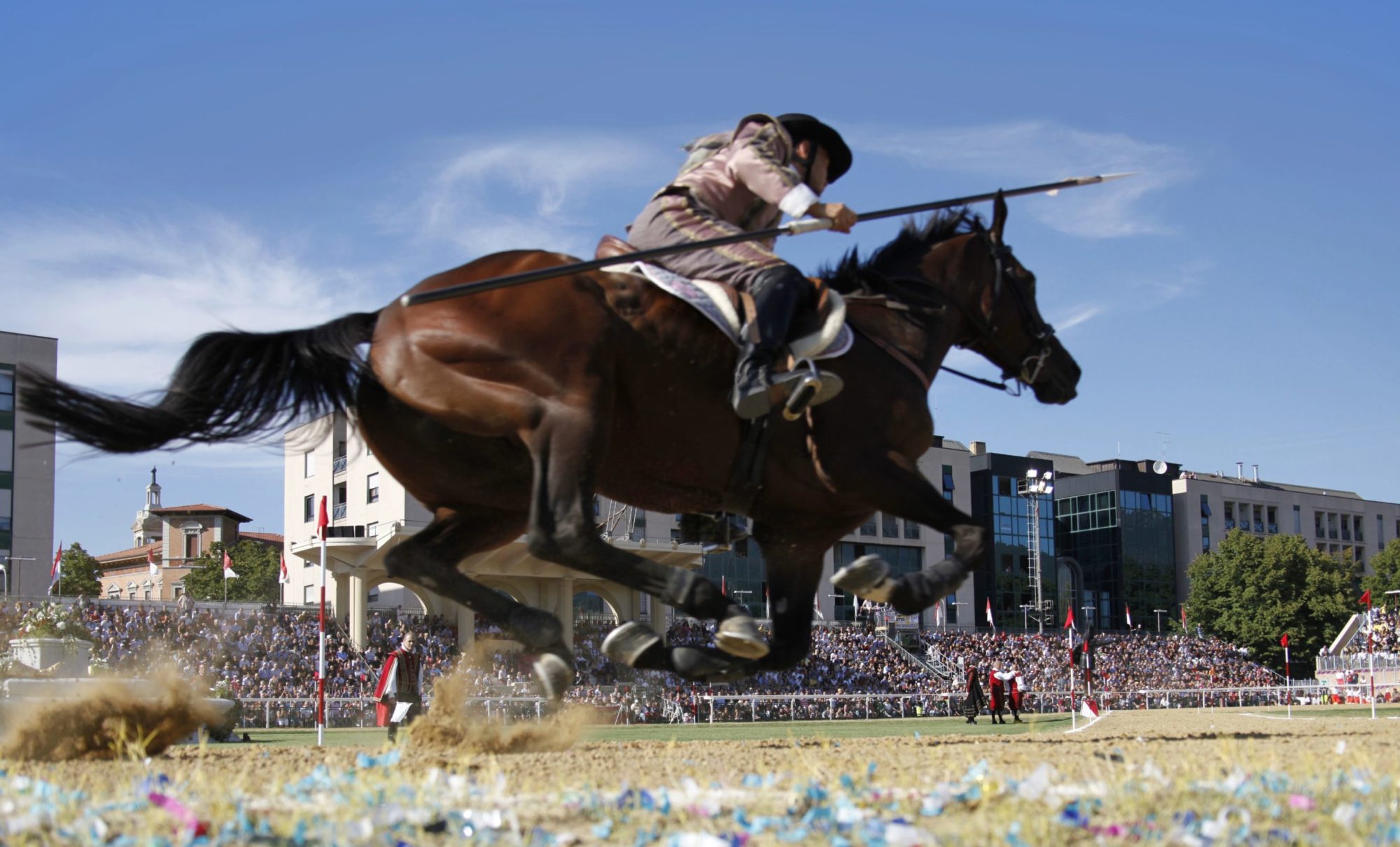THE HISTORY OF QUINTANA / 1946
The first Giostra takes place on September 15th, the regulation consists of 7 items, the track is oval and the statue of the God Mars is positioned on the straight in front of the Central Tribune. The maximum time to complete the course is three minutes. The evening before the Giostra, at Palazzo Trinci, the Call written by the lawyer Giuseppe Mancini is read, which calls for harmony, to soothe the wounds left by the war. Immediately afterwards the costumed characters parade through the streets of the city center amid the stupor of the Folignati. At the Campo de li Giochi the entrance ticket prices are: 250 lire for the grandstands, 100 for the stands and 50 for the seats in the field. Gianlivio Sorbi wins over Isabella for the Croce Bianca district, and Giostra’s horses are all remedied on the spot. Among them is Morello, a tired and sad horse, who during the year travels the road that leads to the cemetery by pulling the hearse. The Giostra will never win, but its versatility makes it a memorable horse. La Quintana, conceived as a unique edition, appeals to people and is revived the following year.

THE HISTORY OF QUINTANA / 1947
The Europe of reconstruction blesses the Marshall Plan. Instant photography is born with Kodak.
In Foligno the first Central Committee is born and the vice president, Monsignor Luigi Faveri proposes the blessing of the bishop in Piazza for horses and riders. The offices of first magistrate and consuls of the municipality are established. The first captain of the people is Marcello Formica, while Emilio De Pasquale is named first magistrate. Master of the Field is Vinicio Taleri and wins the Giostra Alberto Moretti, Gagliardo of the Ammanniti district, riding Vaporetto. Moretti is the first multi-victorious and Vaporetto the first champion.

